Problem statement:
Trying to utilize GEKKO to optimally select the number of appliances within the available capacity while minimizing the energy cost.
Problem model:
I cannot post an image but here is the link to see the formula and also you can copy and paste below to find it visually better:
\min \sum _{t=1}^{24} n x_{i} P_{i}
subject to:
\sum _{i=1}^{24} C_{i} - x_{i} = 0
C_{min} < C_{i}< C_{max}
x_{min} < x_{i}< x_{max}
n_{min} < n_{i}< n_{max}
\sum_{t=1}^{T} \tau_{i}^{t} = I_{i}
where, x and n are the state variables representing the assigned power and number of appliances in a station. C is the capacity, is the operating state of appliance (the ON/OFF condition) at time slot t, and I_{i} is the permissible interval for each appliances (i.e. 5 hrs)
Work done so far:
Thanks to post here I put the following together:
from gekko import GEKKO
import numpy as np
import matplotlib.pyplot as plt
m = GEKKO(remote=False)
m.time = np.linspace(0,23,24)
#initialize variables
cap_low = [55.,55.,55.,55.,55.,55.,55.,68.,68.,68.,68.,\
55.,55.,68.,68.,68.,68.,55.,55.,55.,55.,55.,55.,55.]
cap_upper = [75.,75.,75.,75.,75.,75.,75.,70.,70.,70.,70.,\
75.,75.,70.,70.,70.,70.,75.,75.,75.,75.,75.,75.,75.]
TOU = [0.05,0.05,0.05,0.05,0.05,0.05,0.05,50.,50.,50.,50.,50.,\
50.,50.,50.,50.,50.,50.,50.,50.,50.,0.05,0.05,0.05]
k = 1.1 #Safety factor
CL = m.Param(value=cap_low)
CH = m.Param(value=cap_upper)
TOU = m.Param(value=TOU)
x = m.MV(lb=6, ub=32)
x.STATUS = 1 # allow optimizer to change
n = m.MV(lb=1, ub=10, integer=True)
n.STATUS = 1 # allow optimizer to change
# Controlled Variable
C = m.SV(value=55)
m.Equations([C>=CL, C<=CH])
m.Equation(k*C - n* x == 0)
m.Minimize(TOU*n*x)
m.options.IMODE = 6
m.solve(disp=True,debug=True)
plt.subplot(3,1,1)
plt.plot(m.time,cap_low,'k--')
plt.plot(m.time,cap_upper,'k--')
plt.plot(m.time,C.value,'r-')
plt.ylabel('Demand')
plt.subplot(3,1,2)
plt.step(m.time,x.value,'b:')
plt.ylabel('Load')
plt.xlabel('Time (hr)')
plt.subplot(3,1,3)
plt.step(m.time,n.value,'r:')
plt.ylabel('No. of Appliances')
plt.xlabel('Time (hr)')
plt.show()
Outcome
The above code results in a promising result but there is a lack of last constraint \sum_{t=1}^{T} \tau_{i}^{t} = I_{i} for limiting the operation time of each appliances.
Question:
This problem seems like a combination of Model Predictive Control (tracking the available load capacity) and a Mixed Integer Linear Programing (multiple appliances with multiple linear operational equations). So the questions are:
How can I define the permissible interval for each appliances in above code to limit their operation in a day.
What is the best way to integrate MPC and MILP in Gekko

